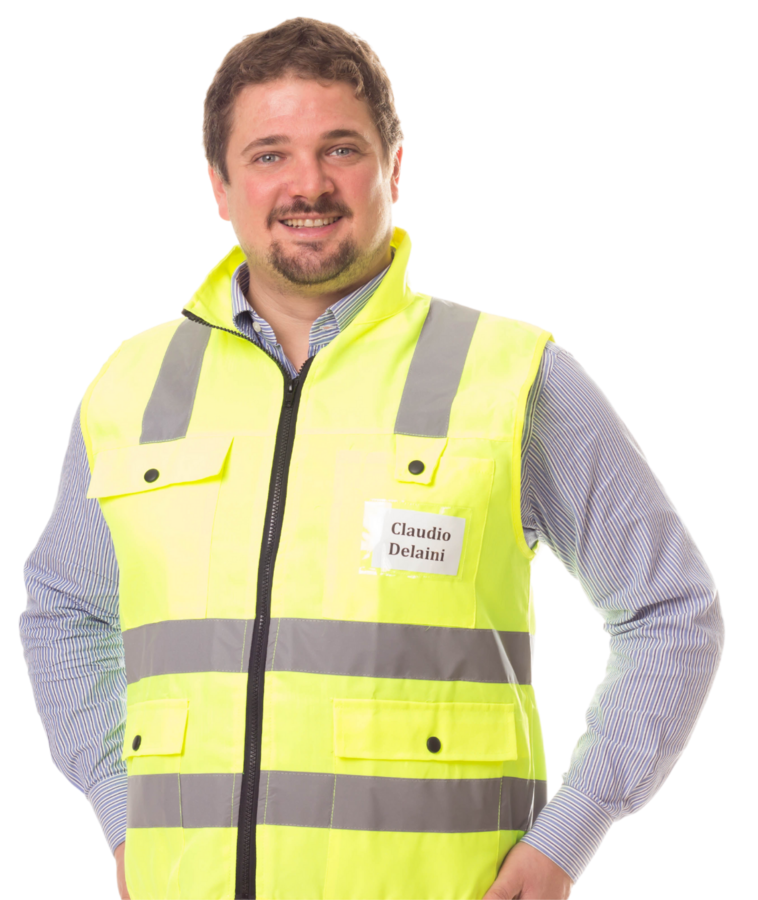Buongiorno, sottopongo un quesito:
Due macchine certificate CE collegate tra di loro, nel senso che una alimenta l’altra fornendo il materiale, ma comandate ognuna dal suo circuito di comando DEVONO essere certificate come un insieme? (rif. art. 2 comma 2 punto 4 della direttiva)
Ognuna ha il suo circuito di comando, il suo quadro, le sue protezioni, entrambe possono funzionare indipendentemente dall’altra.
Spero di essere riuscita a spiegarmi.
Prima domanda:
Ma c’è un collegamento fra le macchine? Un robot? Una linea? Perché se non c’è un qualcosa che le unisce parliamo solo di unione a livello di “flusso” dei pezzi.
Leggiamo cosa dice la Guida della Direttiva Macchine 2017 versione 2.1
§38 Assemblies of machinery
The fourth indent deals with assemblies of machinery consisting of two or more machines or partly completed machines assembled together for a specific application. Assemblies of machinery may be constituted by two units such as, for example, a packaging machine and a labelling machine, or by several units assembled together, for example, in a production line.
The definition of assemblies of machinery indicates that assemblies are arranged and controlled so that they function as an integral whole in order to achieve the same end. For a group of units of machinery or partly completed machinery to be considered as an assembly of machinery, all of these criteria must be fulfilled:
the constituent units are assembled together in order to carry out a common function, for example, the production of a given product;
the constituent units are functionally linked in such a way that the operation of each unit directly affects the operation of other units or of the assembly as a whole, so that a risk assessment is necessary for the whole assembly;
the constituent units have a common control system – see §184: comments on section 1.2.1, and §203: comments on section 1.2.4.4 of Annex I.
A group of machines that are connected to each other but where each machine functions independently of the others is not considered as an assembly of machinery in the above sense.
The definition of assemblies of machinery does not extend to a complete industrial plant consisting of a number of production lines each made up of a number of machines, assemblies of machinery and other equipment, even if they are controlled together by a single production control system. Only if the plant (which may be any combination of machinery, partly completed machinery and other equipment resulting in machinery subject to the Machinery Directive) forms a single integrated line is it subject to the Machinery Directive as an assembly. So for the purpose of applying the Machinery Directive, most industrial plants can be divided into different sections, each of which may be a distinct assembly (of machinery) or even an independent machine (e.g. a mixing vessel). Even a single production line may be divided into separate assemblies and/or
machines if there is no safety related connection between constituent assemblies or machinery.
However, where risks are created by the interfaces with other sections of the plant these must be covered by the installation instructions – see §264: comments on section 1.7.4.2 (i) of Annex I.
It should also be noted that the placing on the market of equipment installed in industrial plants that is not in the scope of the Machinery Directive may be subject to other EU internal market legislation – see §89 to §92: comments on Article 3.
The person constituting an assembly of machinery is considered as the manufacturer of the assembly of machinery and is responsible for ensuring that the assembly as a whole complies with the health and safety requirements of the Machinery Directive – see §79: comments on Articles 2 (i). In some cases, the manufacturer of the assembly of machinery is also the manufacturer of the constituent units. However, more frequently, the constituent units are placed on the market by other manufacturers, either as complete machinery that could also operate independently according to the first, second or third indents of Article 2 (a), or as partly completed machinery according to Article 2 (g).
If the units concerned are placed on the market as complete machinery that could also operate independently, they must bear the CE marking and be accompanied by an EC Declaration of Conformity – see §103: comments on Article 5 (1). If they are placed on the market as partly completed machinery, they must not bear the CE-marking, but note that if other legislation providing for CE marking also apply (e.g. ATEX Directive, Radio Equipment Directive, etc.), a CE marking will have been applied, in which case the Declaration of Conformity should state it only covers that legislation. In all cases the partly completed machinery must be accompanied by a Declaration of Incorporation under the Machinery Directive together with assembly instructions – see §104: comments on Articles 5 (2), and §131, comments on Article 13.
Assemblies of machinery are subject to the Machinery Directive because their safety depends not just on the safe design and construction of their constituent units but also on the suitability of the units linked together and the safety of the interfaces between them. At the interface modifications to or extra, guarding/protection devices may need to be designed and fitted so that the assembly as a whole is compliant. The risk assessment to be carried out by the manufacturer of an assembly of machinery must therefore cover both the suitability of the constituent units for the safety of the assembly as a whole and the hazards resulting from the interfaces between the constituent units. It must also cover any hazards resulting from the assembly that are not covered by the EC Declaration of Conformity (for machinery) or the Declaration of Incorporation and the assembly instructions (for partly completed machinery) supplied by the manufacturers of the constituent units.
The manufacturer of the assembly of machinery must:
carry out the appropriate conformity assessment procedure for the assembly of machinery – see §127 to §130: comments on Article 12;
affix a specific marking (for example, a specific plate) to the assembly of machinery with the information required by section 1.7.3 and, where appropriate, sections 3.6.2, 4.3.3 and 6.5 of Annex I, including the CE marking;
draw up and sign an EC Declaration of Conformity for the assembly of machinery – see §103: comments on Article 5 (1).
compile the technical file which must contain the results of the risk assessment and the design details of the interfaces (e.g. guards, linking conveyers, hoppers, feeders and electronic interface devices) between the items. It must also document any modifications that have been made to the constituent units when incorporating the new items into the assembly. The EC Declaration of Conformity for complete machines and the Declaration of Incorporation and the assembly instructions for partly completed machinery incorporated into the assembly of machinery must also be included in the technical file for the assembly of machinery – see §392: comments on Annex VII A 1 (a).
Qui siamo nella situazione di unione solo a livello di flusso dei pezzi. Non c’è un comando unico per tutto l’insieme, quindi, come riporta l’estratto della guida alla direttiva, l’insieme NON soddisfa TUTTI e tre i criteri per considerarlo un insieme di macchine.
Non sono un insieme. Una marcatura CE sarebbe falsa
Riportiamo cosa dice la direttiva macchine 2006/42 nel testo del recepimento italiano:
D Lgs 17/2010 (Direttiva macchine)
Art. 2 – comma 2, punto 4: “…disposti e comandati in modo da avere un funzionamento solidale”…
se aziono una emergenza (interblocco, pulsante rosso, laserscanner, barriera AOPD…) si deve fermare l’insieme, non solo una parte che invece è scollegata e può funzionare da sola.
Oppure leggi la Guida alla Direttiva al §38 dice che un gruppo di macchine collegate le une alle altre ma in cui ciascuna funziona in modo indipendente NON viene considerato un insieme… e così via studiando. perché questo è nella logica stessa delle Direttive del New Approach.
l’unione di cui parla la direttiva macchine intende che le due macchine siamo fisicamente unite con una una unità di comando comune. Se due macchine fanno una lavorazione in sequenza non si ha la possibilità di certificarle come se fossero unite. Ogni macchina il suo CE.
Se hanno due quadri di comando indipendenti non sono un insieme.


